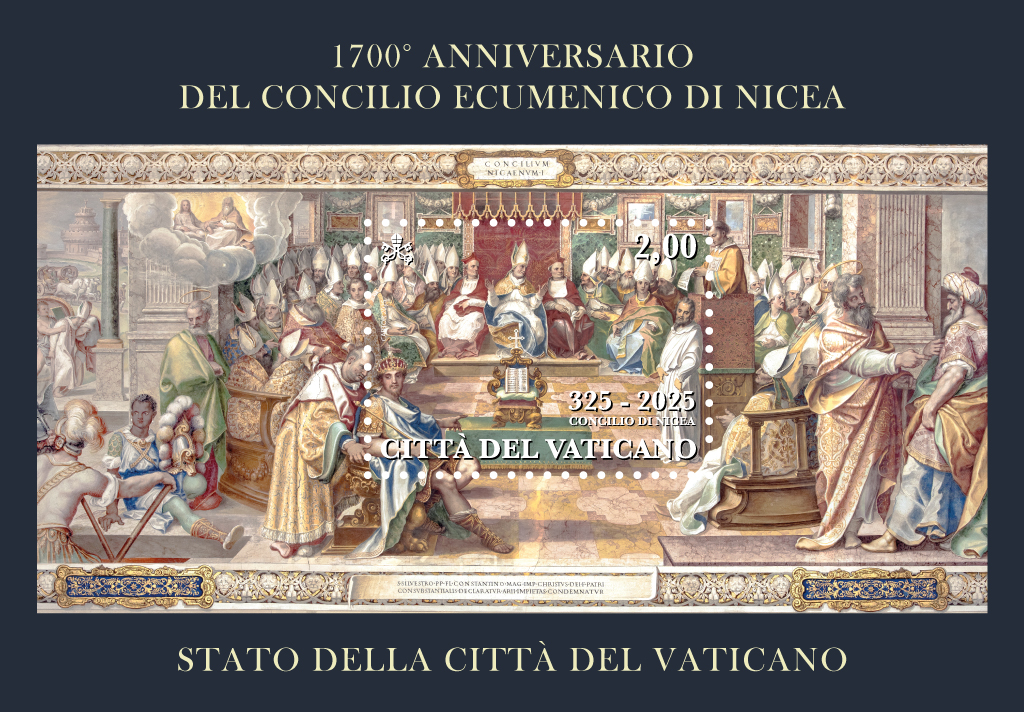News archive

A Stamp to Commemorate the Council of Nicaea: 1700 Years of Shared Faith Between Memory and Hope
Seventeen centuries after the First Ecumenical Council of the Church, on May 27 the Vatican's Postal and Philatelic Service marked the anniversary with a refined miniature stamp sheet that combines artistic beauty with theological depth. The stamp, taken from one of the frescoes in the majestic Sistine Hall of the Vatican Apostolic Library, powerfully depicts the assembly of Nicaea, convened in 325 AD by Emperor Constantine.
At the center of the composition stands the Book of the Gospels, the heart of the Christian faith. Surrounding it is a congress of bishops and papal legates, depicted in the solemn act of condemning the Arian heresy. The fresco — and with it, the stamp — conveys the profound spiritual authority of this first great conciliar gathering, symbolically confirmed by the presence of the Apostle Peter and the Father, who underscores the consubstantiality of the Son by holding His hand. In the background, Emperor Constantine watches in support of the event, bearing witness to the historic alliance between civil and religious authority in the service of truth.
Seventeen centuries later, the message of Nicaea remains strikingly relevant: it reaffirms the centrality of faith in Christ as true God and true man — in a context where, as Pope Leo XIV reminded the Cardinals during the “Pro Ecclesia” Mass on May 9, “Jesus, though still appreciated as a man, was reduced merely to a kind of charismatic leader or superman.”
Nicaea still speaks to the Church today: it reasserts the value of episcopal collegiality and the need for true synodality — the ability to discern together, in the light of the Spirit, the paths of faith. Finally, it suggests a concrete commitment to renew the desire for a common date for the celebration of Easter among all Christian denominations as a visible sign of unity around the central event of salvation.
A small stamp, then, becomes a tool of proclamation: a living memory of a fundamental council and, at the same time, a prophetic gaze open to the future of the Church.
Fr. Felice Bruno



